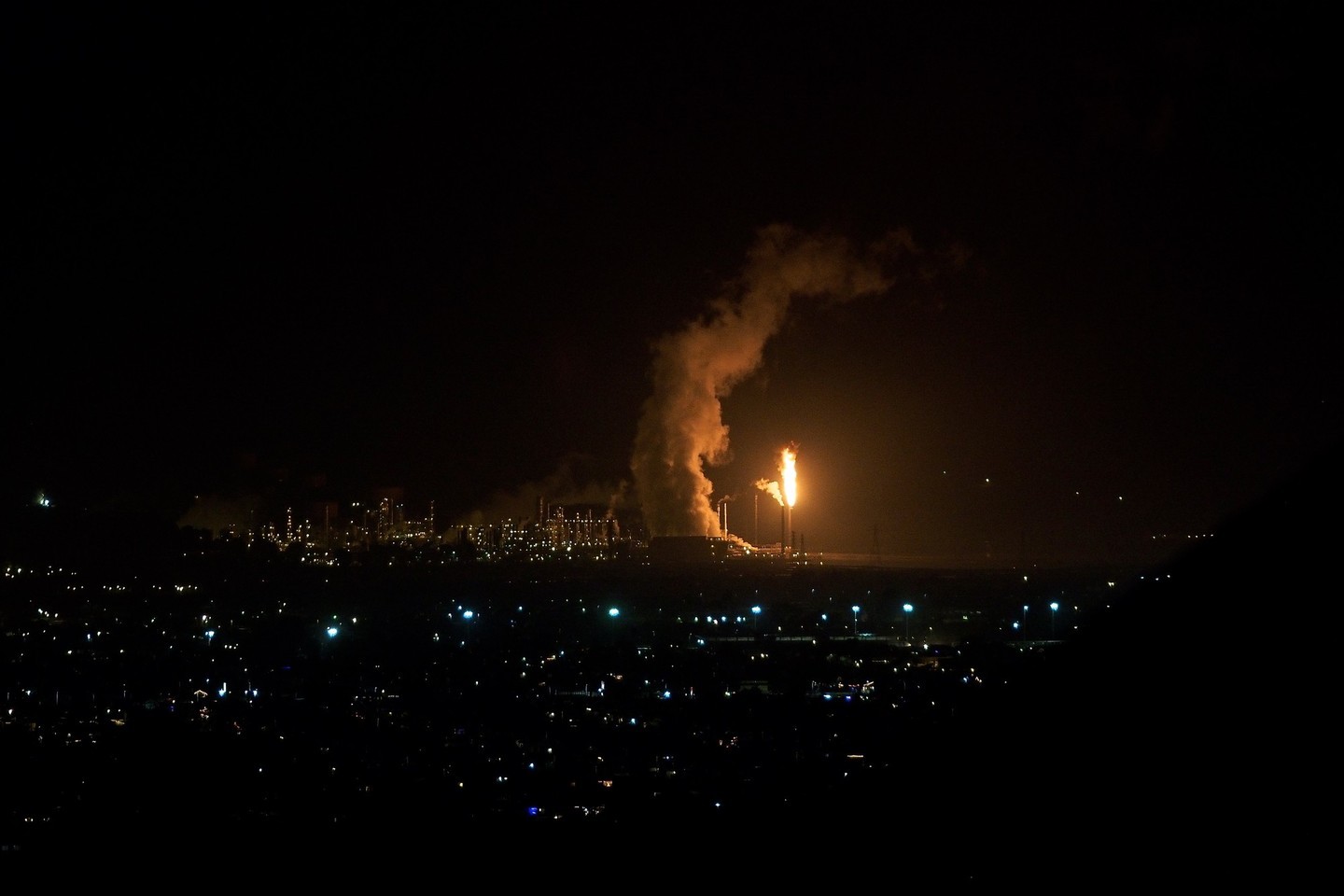Denny Larson, executive director of Global Community Monitor, an El Cerrito environmental organization that contracted with the city of Richmond to help set up half a dozen air monitors near the refinery, said it was "absolutely clear" that the flaring caused elevated levels of particulate matter, black carbon and hydrogen sulfide on Thursday evening.
Larson said he believes the impact was local, not just up and over the bay. "What goes up must come down," he said.
Contra Costa County's Sawyer confirmed that air monitors in the vicinity of the refinery had detected fine particulates -- microscopic bits of carbon and other material that can cause respiratory problems and other health issues -- on Thursday evening. But he added that the source of the particulates was still being investigated.
He said a county response team did smell smoke during the incident, "but it was like wood smoke, like ... from a [fireplace] fire. And that could be causing the particulates, but we don't know that yet."
Original post: An official with Chevron's Richmond refinery says the company is investigating a Thursday night malfunction that prompted a shutdown of part of the facility and produced a flare that could be seen in much of the central Bay Area.
Bay Area air quality regulators are also investigating the incident and expect to release a preliminary report later Friday.
The company official, whose name we've agreed not to use, said a problem in the refinery's "solvent deasphalting unit" led to the flaring operation. That's a section of the refinery that uses solvents to break down the heaviest material produced in the crude oil distillation process.
The official said it was unclear Friday why the unit malfunctioned. Flaring began about 6:30 p.m. and continued through about 10 p.m.
The company said in statements Thursday evening that the event did not represent a health or safety threat to the community. Contra Costa County health officials reported elevated levels of fine particulates at monitors around the refinery, but not high enough to prompt a shelter-in-place order. Long-term exposure to fine particulates -- tiny bits of carbon and other material that can be inhaled deep into the lungs -- can lead to respiratory and heart disease and other health problems.
The main reason for widespread public concern over the flare -- beyond the fact that huge flames were leaping high into the night sky -- is the August 2012 fire at the refinery. That incident, triggered when a deteriorating section of pipe in the facility ruptured, led to about 15,000 people in the area seeking medical treatment, mostly for breathing problems.
Both the company and people in the community took to Facebook as Thursday night's event unfolded. The company statement posted there said:
There has been visible flaring from the Richmond refinery this evening. We understand that the community has been concerned about the flaring activity.
We had a process unit that needed to be depressurized, creating a visible flare. The flare is part of a safety system which enables us to safely shut down a unit. We are in the process of shutting down this unit now.
In flaring conditions, it is normal practice to release quantities of water vapor (steam) to assist with the flare quality. This can take on the appearance of smoke.
The flaring has now stopped. There may be intermittent flaring this evening as we continue to safely bring down the unit.
There has been no impact to the community.
Contra Costa County Supervisor John Gioia, a Richmond resident, was also on Facebook responding to the incident:
Some observations of the Chevron flaring event -- this is not a normal flaring event. It is emergency flaring. According to the Contra Costa Hazardous Materials Division, there was a problem in the de-asphalting unit at the refinery. Gases were sent out through multiple flares. There is a more extensive network of fenceline/ground level air monitors in place around the refinery that did not exist during the 2012 Chevron fire. Haz Mat investigators have been monitoring the readings of these air monitors as well as the direction of the gases/smoke from the flaring. It is important to note that the gases released into the air are hazardous materials. The Health Department is continually monitoring whether any of these hazardous gases are at ground level where residents can breathe them and be exposed to them. They have determined, so far, that a shelter in place is not necessary. I'm sure they will be monitoring the air quality at ground level throughout the night.
